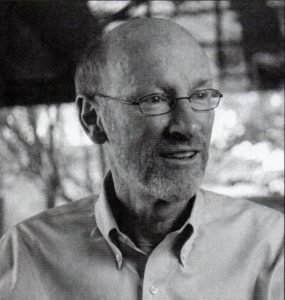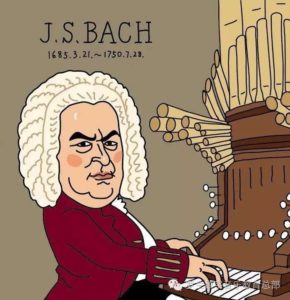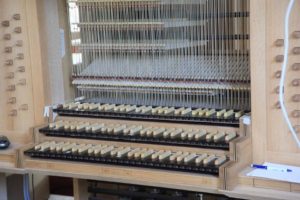Orgelkids China執行長蔣士挺(Justin Berg)「兒童管風琴教育專欄」【初因初音】。
『Aristide Cavaille-Coll, part II』from the column【My First Sound】 by Justin Berg, the Executive Director of Orgelkids China. (In English below)
上次我們已經預作準備,打算要探索19世紀管風琴建造大師卡發耶科爾所設計的管風琴了。我們回顧並且認識了17到18世紀的法國管風琴。你可能還記得,卡發耶科爾使管風琴的發展出現極為徹底的轉變,他的改革創新令管風琴設計的走上全新的方向。現在我們要介紹卡發耶科爾如何運用他從本國的管風琴傳統中學習到的元素,開創出一個嶄新的傳統,因而不只取代了古典管風琴,更自此影響了全世界的管風琴演奏家和建造家。
上一篇介紹中已經提到,卡發耶科爾出生時的法國充滿相當多的社會和政治革新,許多偉大的科技變化就發生在他在世期間。我們現在對於工業世界習以為常,而19世紀正是工業如火如荼擴展到歐洲各地的時代,蒸氣火車也使旅遊和交通運輸發生重大的變革。這些變化最後便開始衝擊傳統工藝形式,包括管風琴製造的某些基本步驟,例如木工和金屬工藝。不過在卡發耶科爾還在世的期間,這些變化都還很遙遠,所以他沒有受到科技和大量製造的阻礙,他找到了一些很有創意的方法,將這些元素都結合在他的管風琴作品中。
卡發耶科爾家族代表一種精巧的工藝傳統,他的祖父、父親、兄長都是管風琴建造家。他出生於1811年,當時歐洲各地的管風琴建造幾乎沒有脫離古典概念而轉變的跡象。例如,孟德爾頌(1809-1847)在德國各邦所認識的管風琴,大部分的手鍵盤都還保有主音管和笛管的合奏音栓,而他在英國所彈奏的管風琴多半仍按照「中全音律」(Meantone temperament,以純大三度為基礎,可以因調性關係移動純大三度的位置,巴洛克時期常用,不適用所有的調式)來調音。而義大利、西班牙和葡萄牙的管風琴,仍是按照相當古老的概念所建造的,雖然作曲風格已有巨變。
這個時期的法國管風琴,同樣是根據18世紀的古典管風琴來擴充,在規格、送氣、機械結構上甚少創新。19世紀早期的法國管風琴建造,最值得注意的方向或許就是沿襲了18世紀的加倍簧管傾向。上一篇文章提到過,整批的燦爛簧片音管、法國小喇叭音管和強而有力的簧片蓬巴德音管(Bombardes)愈來愈成為法國管風琴的標準配備,並且帶來日後的革命性進展,甚至超越這個成果。這種對於強大簧管的偏好,不僅非常適合現代人對於莊嚴雄偉的鑑賞力,也符合用聲音把又大又深的教堂空間填滿的需要。卡發耶科爾後來便將這一種趨勢發揮到邏輯上最淋漓盡致的結果。
通常一想到卡發耶科爾製作的管風琴,就會想起簧管的主音管合奏。你可能記得,齊奏(主音管和混合音管)由於發聲和供氣的緣故,是無法與古典法國管風琴的簧管合奏(燦爛簧片音管及法國小喇叭音管)結合的,但是卡發耶科爾發明一種方法,既可以維持簧管的光輝亮麗,又可以結合到音栓齊奏裡。他運用較高的風壓,採用一種不同的整音方式,於是克服了過去的限制,而這個相當巧妙的解決方法,也導致後世的管風琴建造家能夠進行各種方式的實驗,讓單一管風琴的各個鍵盤或相關聯管件運用不同的風壓。(待續)
你的朋友蔣士挺
〜Cavaille-Coll (Part II)
Last time, we prepared to explore the organs of the 19th century master builder, Aristide Cavaille-Coll, by looking back and listening to French organs of the 17th and 18th century. You may recall from the previous article that Cavaille-Coll altered the development of the organ so profoundly that his innovations redirected the very path of organ design. Today then, we will consider how Cavaille-Coll used what he learned from his native country’s tradition to create a new tradition; one that not only replaced the Classical organ, but also impacted organists and builders the world over.
As mentioned before, Aristide was born at a time of great social and political innovation in France. His life also spanned a period of great technological change. The world of manufacturing, so familiar to us today, was rapidly spreading across Europe throughout the 19th century. At the same time, the steam locomotive revolutionized travel and transport. Such changes would eventually begin to impact traditional forms of craftsmanship, including some of the processes essential to organbuilding, such as wood and metal working. But those changes were far enough off during his lifetime that, rather than be hindered by the advent of technologies and mass manufacturing, Cavaille-Coll found creative ways to incorporate them into his own work.
The Cavaille-Coll family represented a tradition of craftsmanship, with Aristide’s grandfather, father and older brother all working as organ builders. At the time of Aristide’s birth in 1811, organ building throughout Europe still showed little evidence of a transition away from Classical ideals. For instance, the organs that Felix Mendelssohn (1809-1847) knew throughout the German states largely retained choruses of principles and flutes in each manual division, while those he played in England were still mostly tuned in Meantone temperament. For that matter, organs throughout Italy, Spain and Portugal were still built according to rather old-fashioned ideals, despite upheavals of compositional style. Similarly, French organs of this period continued to expand upon the Classical instruments of the 18th century with little innovation in their specifications, winding or mechanism.
Perhaps the most notable direction in early 19th century French building was the
continuation of the previous century’s penchant for reduplicated reeds. You may recall from the previous article that batteries of Trompettes, Clarions and Bombardes became increasingly standard fare for French organs, leading right up to, and beyond, the Revolution. This predilection for powerful reeds suited not only the contemporary sensibilities of grandeur, but also the need to fill cavernous churches with sound. This was a trend that Cavaille-Coll would later exploit to its logical and extreme conclusion.
When people think of Cavaille-Coll organs, often the first sound that comes to mind is the full principal chorus with reeds. You might recall that the plenum (principals and mixtures) could not be combined with the reed chorus (Trompettes and Clarion) in Classical French organs because of their voicing and wind supply. However, Cavaille-Coll found a way of both maintaining the brilliance of the reeds while simultaneously incorporating them into the Plein-Jeu. He overcame previous limitations by adopting a different style of voicing based on higher wind pressures. This rather ingenious solution would lead to all manner of experiments by later builders who wanted to place ranks and whole divisions of a single organ on highly different wind pressures. (To be continued.)
Your Friend,
Justin





